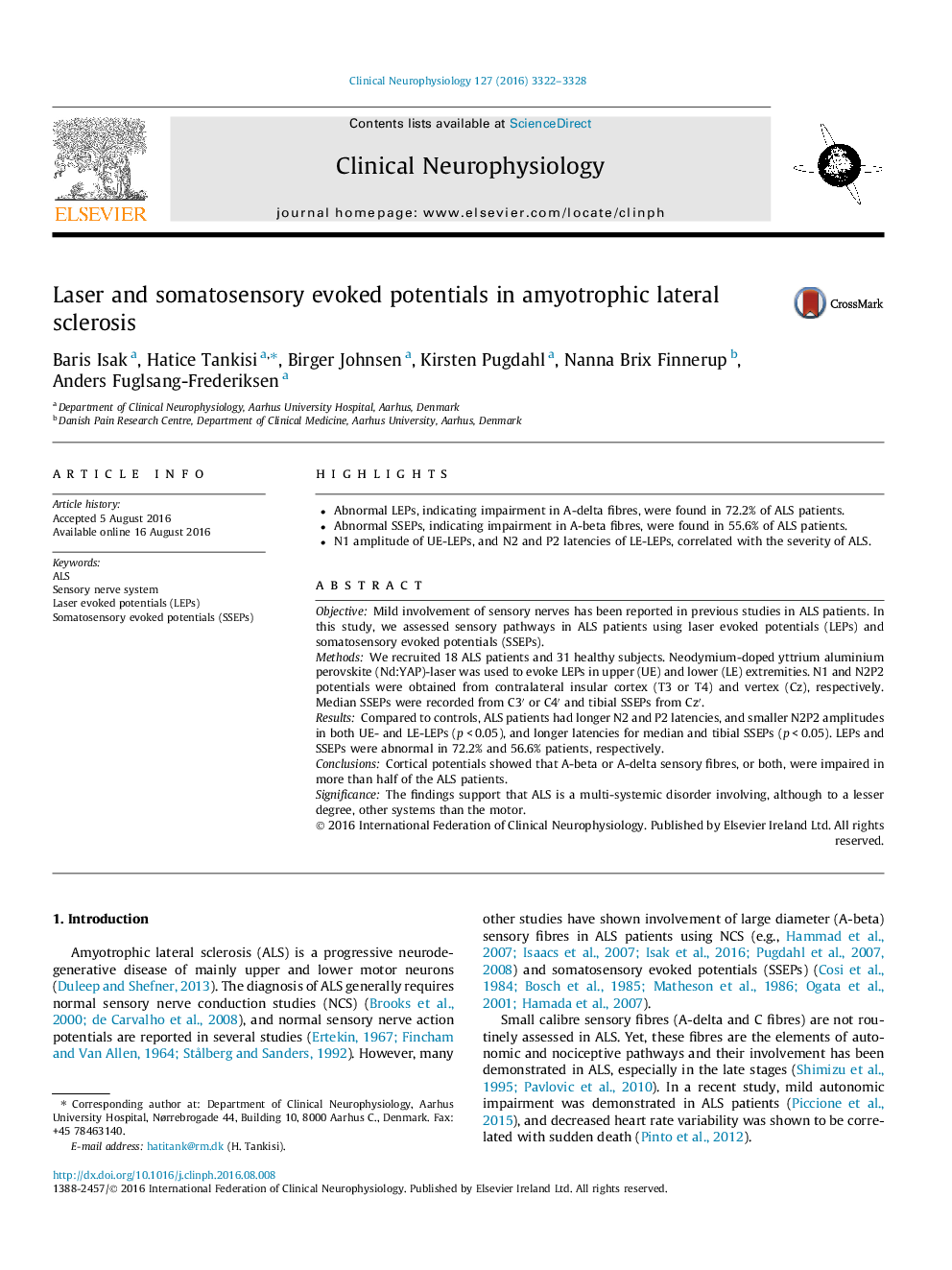| Article ID | Journal | Published Year | Pages | File Type |
|---|---|---|---|---|
| 5627881 | Clinical Neurophysiology | 2016 | 7 Pages |
â¢Abnormal LEPs, indicating impairment in A-delta fibres, were found in 72.2% of ALS patients.â¢Abnormal SSEPs, indicating impairment in A-beta fibres, were found in 55.6% of ALS patients.â¢N1 amplitude of UE-LEPs, and N2 and P2 latencies of LE-LEPs, correlated with the severity of ALS.
ObjectiveMild involvement of sensory nerves has been reported in previous studies in ALS patients. In this study, we assessed sensory pathways in ALS patients using laser evoked potentials (LEPs) and somatosensory evoked potentials (SSEPs).MethodsWe recruited 18 ALS patients and 31 healthy subjects. Neodymium-doped yttrium aluminium perovskite (Nd:YAP)-laser was used to evoke LEPs in upper (UE) and lower (LE) extremities. N1 and N2P2 potentials were obtained from contralateral insular cortex (T3 or T4) and vertex (Cz), respectively. Median SSEPs were recorded from C3â² or C4â² and tibial SSEPs from Czâ².ResultsCompared to controls, ALS patients had longer N2 and P2 latencies, and smaller N2P2 amplitudes in both UE- and LE-LEPs (p < 0.05), and longer latencies for median and tibial SSEPs (p < 0.05). LEPs and SSEPs were abnormal in 72.2% and 56.6% patients, respectively.ConclusionsCortical potentials showed that A-beta or A-delta sensory fibres, or both, were impaired in more than half of the ALS patients.SignificanceThe findings support that ALS is a multi-systemic disorder involving, although to a lesser degree, other systems than the motor.
